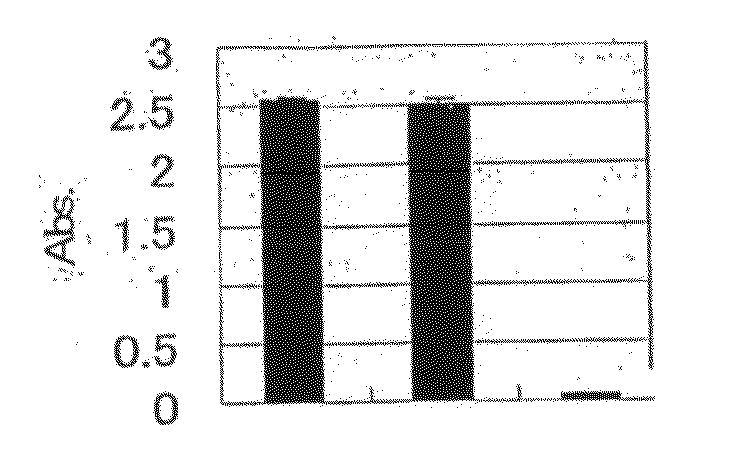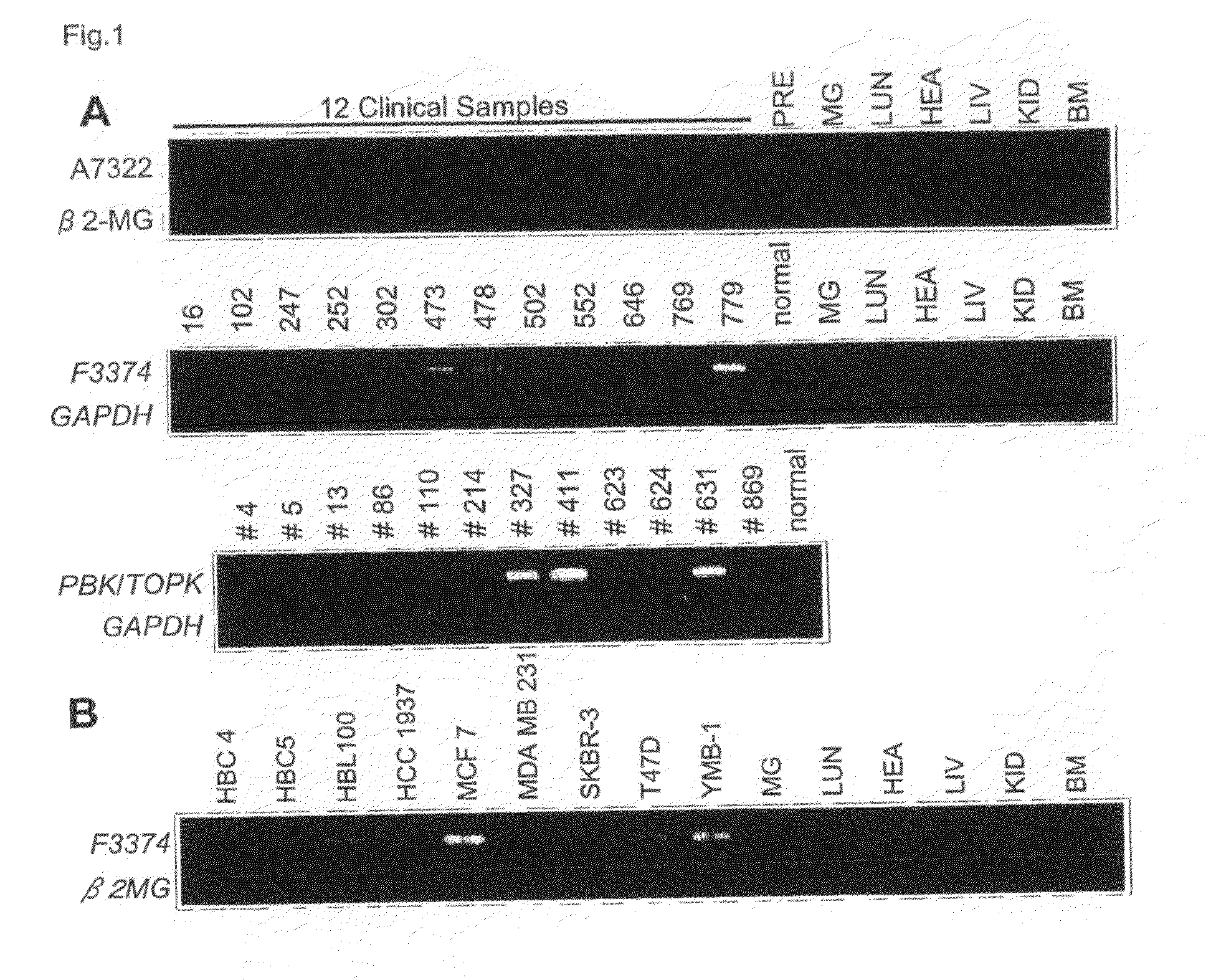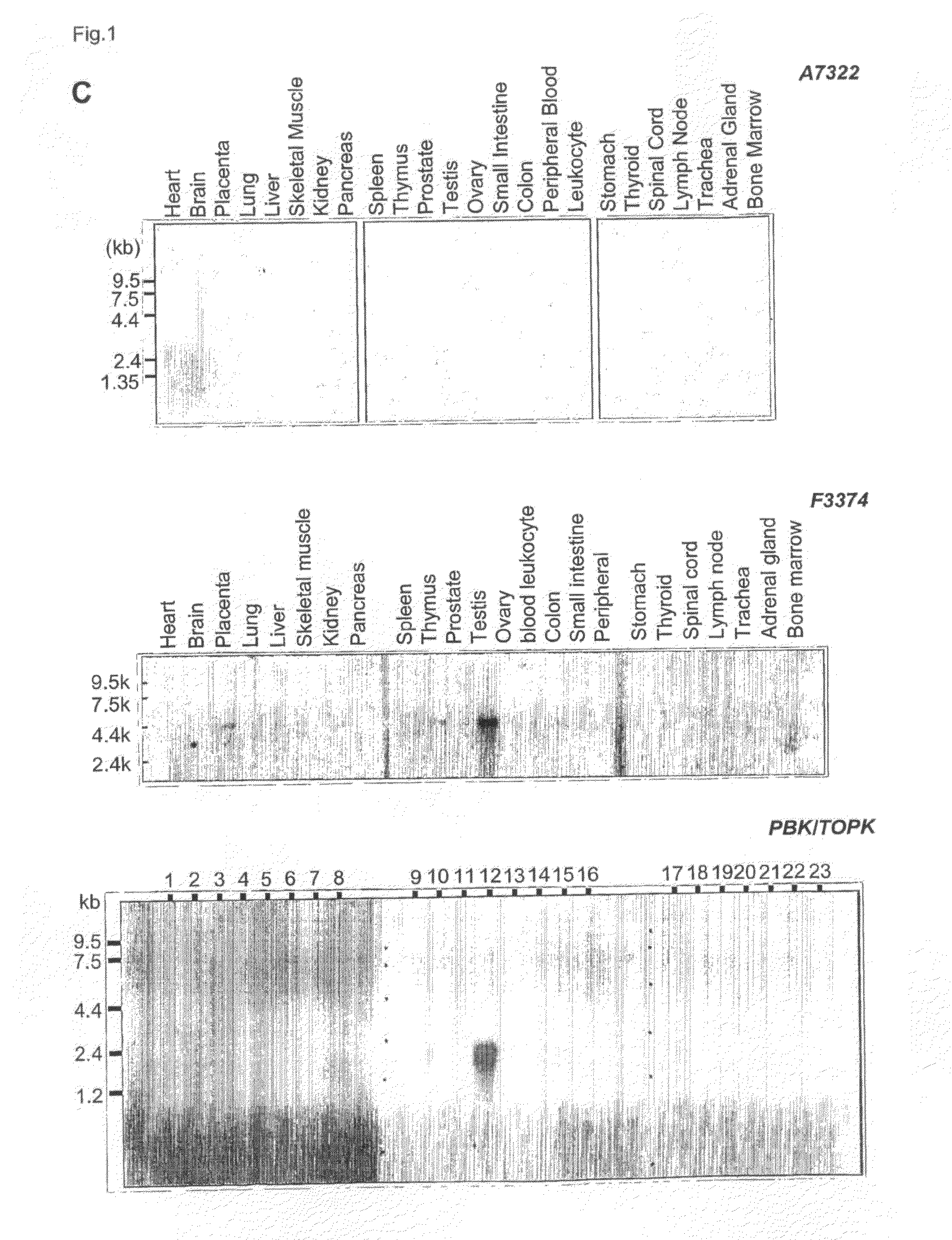Genes and polypeptides relating to breast cancers
a technology of breast cancer and polypeptides, applied in the field of biological science, can solve the problems of toxic to cancer cells and normal growing cells, and achieve the effect of increasing the g2/m population of cancer cells
- Summary
- Abstract
- Description
- Claims
- Application Information
AI Technical Summary
Benefits of technology
Problems solved by technology
Method used
Image
Examples
example 1
Materials and Methods
(1) Cell Lines and Clinical Materials
[0732]Human-breast cancer cell lines HBL100, HCC1937, MCF-7, MDA-MB-435S, SKBR3, T47D, BT-549, YMB1, ZR-75-1, OCUB-F, MDA-MB-453, MDA-MB-157, HCC1599, HCC1500, HCC1395, HCC1143, BT-474 and BT-20 as well as human embryonic kidney cell-line HEK293T cells, BTL100 and COST were purchased from American Type Culture Collection (ATCC, Rockville, Md.). HBC4, HBC5, BSY-1 and MDA-MB-231 cells lines were kind gifts from Dr. Yamori of Division of Molecular Pharmacology, Cancer Chemotherapy Center, Japanese Foundation for Cancer Research. All cells were cultured under their respective depositors' recommendation; i.e. RPMI-1640 (Sigma-Aldrich, St. Louis, Mo.) for HBC4, HBC5, BT-483, SKBR3, BT-549, HCC1143, HCC1599, HCC1500, HCC1395, T47D, YMB1, HCC1937, BSY-1 and ZR-75-1 (with 2 mM L-glutamine); Dulbecco's modified Eagle's medium (Invitrogen, Carlsbad, Calif.) for HBL100 BT-474 and OCUB-F; EMEM (Sigma-Aldrich) with 0.1 mM essential amino a...
example 2
A7322
(1) Identification of A7322 as an Up-Regulated Gene in Breast Cancer
[0829]To identify molecules that could be applicable as targets for novel therapeutic drugs, inventors previously established genome-wide gene-expression profiles of 81 breast cancer patients using cDNA microarray representing 27,648 cDNAs (Nishidate T et al. Int J Oncol 2004; 25:797-819.). Among the up-regulated genes, inventors focused on A7322 whose expressions were up-regulated in the majority of breast cancer specimens. Subsequent semi-quantitative RT-PCR and northern blot analyses confirmed that A7322 was significantly up-regulated in breast cancer specimens (FIG. 1A) as well as breast cancer cell lines (14 of 22), but not expressed in normal organs except brain (FIGS. 1B and D).
[0830]Since the assembled cDNA sequence of A7322 in the NCBI database was shorter than an approximately 15 kb transcript from northern blot analysis as shown in FIG. 1D, inventors performed exon-connection and 5′ RACE experiments ...
example 3
F3374
(1) Identification of F3374 as an Up-Regulated Gene in Breast Cancer
[0847]To identify molecules that could be applicable as targets for novel therapeutic drugs, the present inventors previously established genome-wide gene-expression profiles of 81 breast cancer patients using cDNA microarray representing 27,648 cDNAs (Nishidate T et al. Int J Oncol 2004; 25:797-819.). Among the up-regulated genes, the present inventors focused on F3374 whose expressions were up-regulated in the majority of breast cancer specimens. Subsequent semi-quantitative RT-PCR and northern blot analyses confirmed that F3374 was significantly up-regulated in 10 of 12 breast cancer specimens (FIG. 1A) and all of breast cancer cell-lines (FIG. 1B), but not expressed in normal organs except testis and thymus, placenta, bone marrow (FIGS. 1C and D).
[0848]The full-length cDNA sequences of F3374V1 consist of 4,221 nucleotides, with an open reading frame of 2,193 nucleotides that encode 730 amino-acid peptides (...
PUM
| Property | Measurement | Unit |
|---|---|---|
| Fraction | aaaaa | aaaaa |
| Biological properties | aaaaa | aaaaa |
| Antisense | aaaaa | aaaaa |
Abstract
Description
Claims
Application Information
 Login to View More
Login to View More - R&D
- Intellectual Property
- Life Sciences
- Materials
- Tech Scout
- Unparalleled Data Quality
- Higher Quality Content
- 60% Fewer Hallucinations
Browse by: Latest US Patents, China's latest patents, Technical Efficacy Thesaurus, Application Domain, Technology Topic, Popular Technical Reports.
© 2025 PatSnap. All rights reserved.Legal|Privacy policy|Modern Slavery Act Transparency Statement|Sitemap|About US| Contact US: help@patsnap.com



